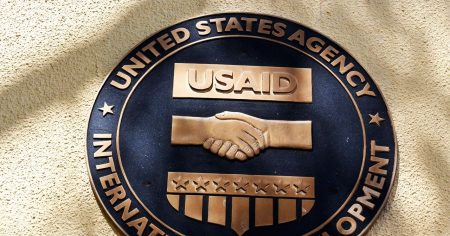Founder and CEO of OnPrpose Inc., helping left-brain industries tell stories as interesting as the work they do.
Think fast: You have eight seconds to get someone’s attention and keep it long enough for them to learn something, take the next step, give you their email or buy something. What do you do?
Like it or not, the average person today has an attention span of just eight seconds—less than a goldfish. When you think back to the last time you searched the web for anything, I’ll bet you lasted less than five seconds on a page that didn’t grab you. Every minute, there are another 231 million emails, 16.2 million text messages, 66,000 Instagram photos and videos and 575,000 tweets competing for a share of that limited attention span.
If you’re like most companies today, you use your eight precious seconds to go hard on the feature or benefit your prospects say they need. You hope you’re sharing the right message at the right moment, piquing their interest and giving them a reason to stick around a little longer—maybe long enough to get the full sales pitch. Maybe even long enough to decide to buy.
Humans Are Wired For Stories
If you think you might have better luck with the goldfish, I understand. But there’s a common thread that runs through every person your business touches: They’re all human. And humans are wired for stories.
We’ve been telling stories for 30,000 years. Why? Because no matter where you are in space or time, stories are the human tool for connection and collaboration.
Stories are as unique and varied as humans themselves. Story structures, however, are much the same. Good stories trigger chemical reactions in the brain that transport us into the story, drive us to relate to the characters and increase our attention.
A small spat between newlyweds. An epic battle between good and evil. A multi-car pile-up on the way to the airport. Each of these scenarios creates tension—an essential element in any story. When we feel that tension, our bodies release the stress hormone cortisol. It’s that first hit of cortisol that hooks us, drawing us into a story.
But cortisol alone doesn’t keep us engaged for long. To hold our attention, a story needs to coax our bodies into releasing oxytocin. We make this so-called “feel good” hormone when we feel close to one another or, if we’re following a really good story, when we feel close to a relatable character. (It’s no coincidence that relatable characters are another essential element of a good story.)
A well-crafted story strikes a delicate balance between cortisol and oxytocin production. Hollywood knows this. That’s why more than half of their movies follow the same plot structure: The hero’s journey. Think Star Wars. A hero is called to adventure, supported by a guide, struggles and ultimately returns transformed.
Harnessing these neurochemical reactions in your marketing can be a powerful tool to connect with and sway your target customer—but you’ll need a good story.
A Proven Structure For Powerful Stories
Every story has a basic arc: A before, a significant event that changes things and an after. But in a world where the average American is exposed to between 4,000 and 10,000 ads every day, a good marketing story needs more than that to stand out.
Here are some aspects to pay attention to when you are marketing your service or product:
1. Get my attention.
This is the hook. An unexpected turn of phrase in the subject line of a cold outreach email. A striking ad on my LinkedIn timeline. Whatever the medium, you need to cause pause and kickstart cortisol production. This is the perfect time to introduce some tension. Remember what I said earlier about that eight-second attention span? The clock starts as soon as I notice you.
2. Make me care.
Now that I’m hooked, you need to reel me in. Sprinkle in some details. Generate real emotion. Make it about me. Maybe you explain my problem to demonstrate that you “get it.” Or maybe you introduce a character (real or fictional) who’s facing a challenge that I can relate to. However you approach it, this step helps build empathy and gets my oxytocin flowing.
3. Make your case.
If you’ve played your cards right in steps one and two, I should be invested in your story and will stick with you to the end. It’s time to make it about how you can help me. Explain how your product or service will solve my problem or improve my life. Help me imagine a future where things are different—all thanks to the thing you’re offering.
4. Make it easy to change my mind or take action.
Now that I can envision a better future, give me a next step that will help turn that possibility into my reality.
It may sound simple, but the real magic happens when leaders and businesses follow this proven story structure and weave the right mix of relatable characters, authentic emotions and empathy into the who, what, where, when, why and how of their stories.
It’s All In The Details
The final critical element is details. General is the same. Specific is different. One of the big mistakes we make today in business storytelling is cutting out details to save time and space or simply because we assume people don’t care. But I’ve found that details are what draw people in, set the scene and help connect us to characters.
Would you rather hear a story about my summer trip across Canada or my summer trip with my daughter, Molly, in a red convertible VW Bug in search of the perfect ice cream cone? Now go build your story.
Forbes Business Council is the foremost growth and networking organization for business owners and leaders. Do I qualify?
Read the full article here










